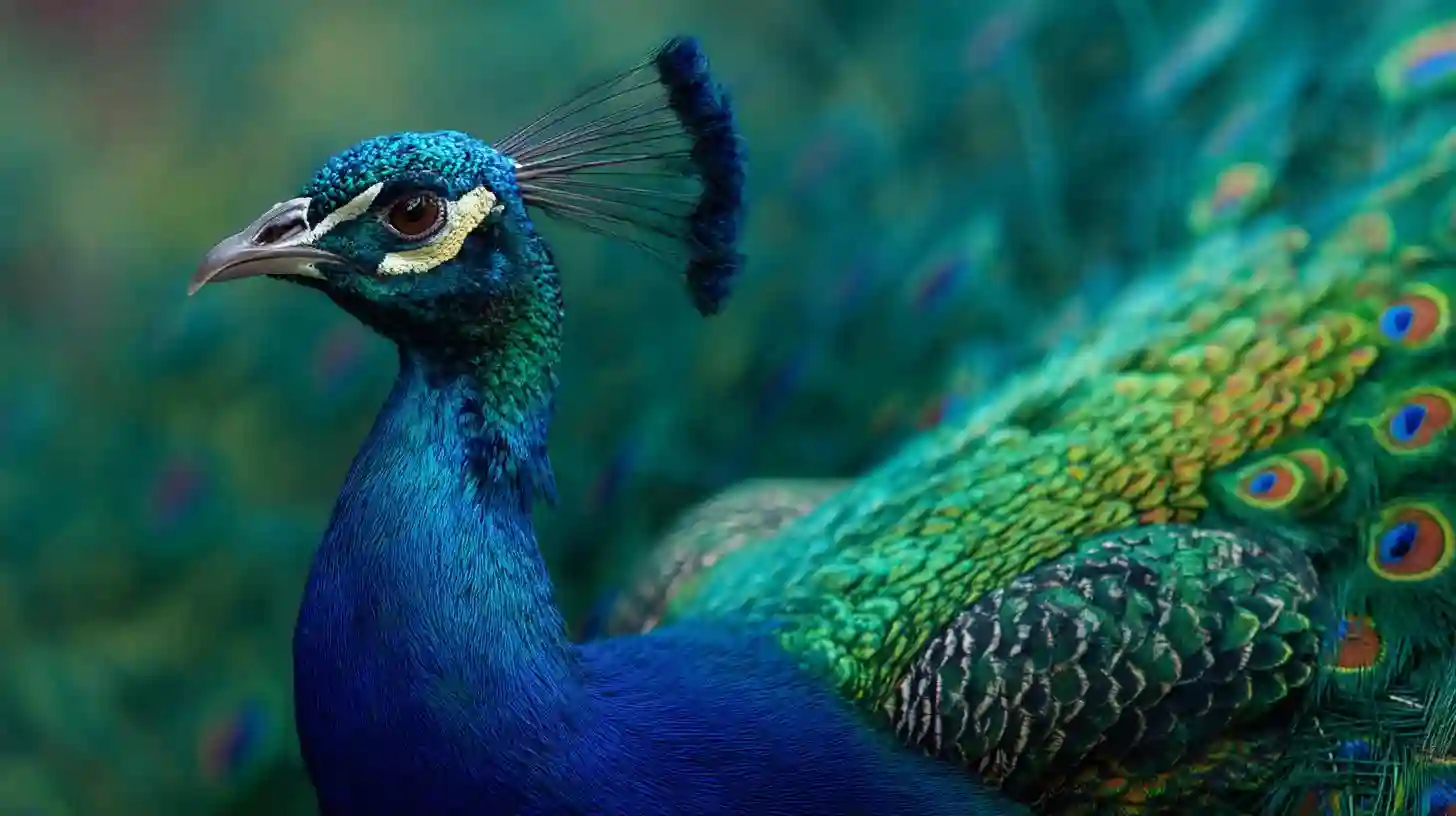
Peafowl, often regarded as the epitome of avian beauty, are a true marvel of nature. The dazzling peacock, with its vibrant, iridescent feathers and striking display, is often the first bird that comes to mind when one thinks of splendor and elegance. These majestic creatures, native to South Asia, have captivated human imagination for centuries. Their presence in mythology, art, and even royal symbolism adds to their allure and mystique.
The male peafowl, commonly referred to as the peacock, boasts a magnificent plumage that is unmatched in the bird kingdom. The tail feathers, or "train," are perhaps the most iconic feature of the peacock, forming a large, fan-like structure. These feathers are adorned with eye-catching patterns that shimmer in hues of blue, green, gold, and purple, creating an almost mesmerizing effect. The intricate details of these feathers are the result of microscopic structures that reflect light in such a way that the colors seem to change depending on the angle from which they are viewed. It is a testament to nature's ability to blend science and art.
The purpose of this extravagant display is not merely for aesthetic pleasure. The peacock uses its tail as a tool for courtship, showcasing it to potential mates during mating season. The male will spread his tail wide, fanning out the feathers and creating a stunning visual display. He will also emit a series of calls and engage in rhythmic movements to draw attention to his plumage. This courtship ritual, which can last for hours, is a fascinating spectacle to witness. The more vibrant and symmetrical the feathers, the more likely the peacock is to attract a mate. It is believed that the extravagant display signals the male's health and genetic fitness, qualities that are passed down to his offspring.
While the peacock's beauty is often in the spotlight, the peahen, the female counterpart, is equally important in the grand scheme of peafowl life. The peahen's plumage, although far less extravagant than the male's, is equally essential to the species' survival. Her muted brown and green feathers allow her to blend seamlessly with her environment, providing her with camouflage as she nurtures and protects her eggs. This natural camouflage is a defense mechanism against predators, ensuring that the next generation of peafowl can thrive in the wild. The peahen's more subdued colors highlight the stark contrast between the sexes, further emphasizing the male's bold and colorful display.
Beyond their striking appearance, peafowls also possess remarkable intelligence and complex social structures. They are social birds, often found in small groups or flocks, where they communicate with one another through a variety of vocalizations and body language. Their calls can range from loud, resonant cries to softer, more subtle noises. These calls serve to alert other members of the flock to potential dangers or to assert dominance within the group. Peafowls are also known for their curious nature, often exploring their surroundings and investigating new environments.
Peafowls are not just limited to the wilds of South Asia. Over the centuries, they have been introduced to various parts of the world, from Africa to the Americas, where they have flourished in different climates and habitats. In many cultures, peafowls are considered symbols of beauty, grace, and even immortality. In ancient India, the peacock was associated with the goddess Saraswati, the goddess of wisdom and learning. In ancient Greece, the peacock was linked to the goddess Hera, representing nobility and divine protection. These rich cultural associations further enhance the peafowl's mystique, cementing its place as one of the most revered and admired creatures on the planet.
Peafowls also play an important role in their ecosystems. As omnivores, they feed on a variety of foods, including seeds, fruits, insects, and small reptiles. Their foraging habits help maintain balance in their environment by controlling insect populations and dispersing seeds. In return, the peafowl benefits from a varied diet that supports their health and vitality, allowing them to maintain their grandeur.
In the presence of peafowls, one cannot help but be struck by the sheer magnificence of their form and behavior. Whether they are strutting proudly in a garden or gliding gracefully through the wild, their presence adds a touch of elegance to any setting. The peafowl’s beauty is more than skin deep. It is a symbol of nature’s endless capacity to awe and inspire, a reminder of the intricate balance between form, function, and artistry in the natural world.